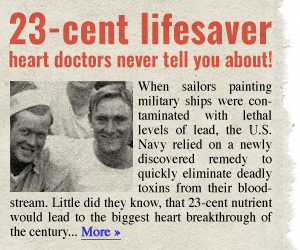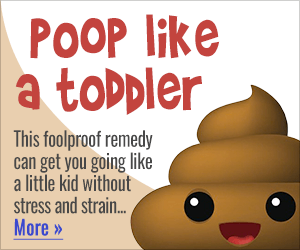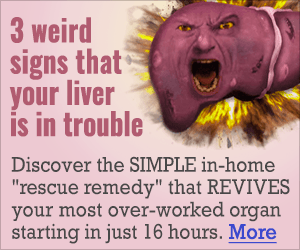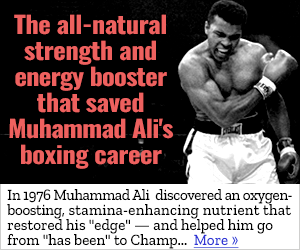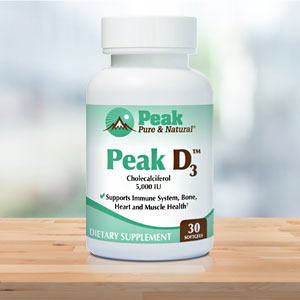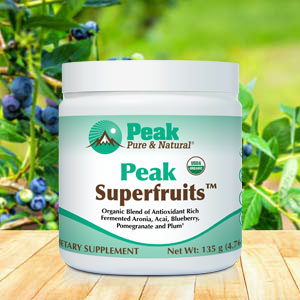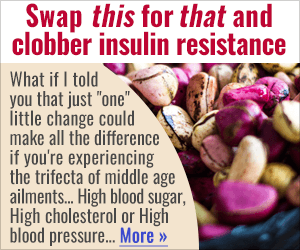Get Easy Health Digest™ in your inbox and don’t miss a thing when you subscribe today. Plus, get the free bonus report, Mother Nature’s Tips, Tricks and Remedies for Cholesterol, Blood Pressure & Blood Sugar as my way of saying welcome to the community!
Brain aneurysm: A not-so-uncommon risk

Are you aware that you could be living with a silent condition that could suddenly turn into a life-threatening situation? Understanding the potential risks and taking immediate steps to protect your health is crucial.
I’m talking about a brain aneurysm (more about what that means below).
According to both the Brigham and Women’s Hospital and the Cleveland Clinic, about 6 percent of us in the United States are living with an unruptured brain aneurysm. In other words, we have no clue it’s there.
If a brain aneurysm ruptures, you may only have minutes to prevent permanent disability or death.
Fortunately, there’s a wealth of information out there, including how to know if you’re at risk for an aneurysm and how to strengthen your blood vessels to decrease the risk of developing one.
Risks and signs of brain aneurysm
A brain aneurysm is different from a blood clot, which blocks blood flow due to a buildup inside a blood vessel.
In the case of an aneurysm, a bulge forms in a weak area of a blood vessel in or around your brain. The constant blood pressure pushes the weakened section outward, creating a blister-like bump.
When blood rushes into this bulge, the aneurysm stretches even farther. Think of a balloon that’s over-filled with air. As it gets thinner, it is more likely to burst.
Menopausal women have a greater risk of brain aneurysms because of changes in estrogen levels. So do people with high blood pressure, atherosclerosis, diabetes, GI conditions and chronic kidney disease.
Other risk factors include smoking, alcohol consumption, head trauma and certain genetic disorders. And they’re most likely to affect people between the ages of 30 and 60.
Some studies show a strong association between decreased vitamin D levels and an increase in aneurysm rupture. Vitamin D receptors in the endothelial cells of arteries have a protective effect against aneurysm rupture.
An unruptured brain aneurysm may have symptoms, but not always, including pain behind one eye, a dilated pupil, a change in vision or numbness on one side of the face. A leaking one may present as a headache that lasts several days.
When a brain aneurysm ruptures, there may be bleeding between your brain and the thin tissues that cover and protect it (a subarachnoid hemorrhage) or in the space between your skull and your brain (a hemorrhagic stroke).
A ruptured brain aneurysm is a life-or-death emergency. Minutes can count in saving your life or preventing permanent brain damage.
Symptoms of a ruptured brain aneurysm include:
- thunderclap headache (sudden onset and severe, often described as “the worst headache of my life”)
- nausea and vomiting
- stiff neck
- blurred or double vision
- sensitivity to light (photophobia)
- seizures
- drooping eyelid and a dilated pupil
- pain above and behind your eye
- confusion
- weakness and/or numbness
- loss of consciousness
Call 911 or get to the nearest emergency room as soon as possible if you have these symptoms.
Inflammation’s connection to aneurysms
Preventing inflammation is at the heart of strengthening blood vessels and preventing aneurysms.
Inflammation starts with oxidative stress, an imbalance of free radicals and antioxidants in the body that damages tissue and cells — including the endothelial cells that line blood vessels in the brain and elsewhere.
Ensuring you get enough antioxidants is crucial to preventing oxidative stress and inflammation.
So, where do you find all these antioxidants?
Fruits and vegetables. The most important fruits and vegetables and bioactive compounds to prevent endothelial diseases are berries, apples, virgin olive oil, tomatoes, soybeans, and polyphenols, carotenoids and unsaturated fatty acids like you find in walnuts.
The reason vitamin D is helpful is because it improves antioxidant capacity. That means if you bring antioxidants into your body via your diet, vitamin D supports them in doing their job because of vitamin receptors throughout the body. It also inhibits inflammation and regulates nitric oxide bioavailability and endothelial function.
It may seem an aneurysm is a roll of the dice. But that’s not necessarily true. Staying on top of any risk factors, like high blood pressure and diabetes, avoiding lifestyle risk factors for aneurysms, including inflammation, and eating nutrition (particularly fruits and vegetables) that supports your blood vessels can go a long way in reducing that risk.
Editor’s note: There are perfectly safe and natural ways to decrease your risk of blood clots including the 25-cent vitamin, the nutrient that acts as a natural blood thinner and the powerful herb that helps clear plaque. To discover these and other secrets of long-lived hearts, click here for Hushed Up Natural Heart Cures and Common Misconceptions of Popular Heart Treatments!
You Have a 3% Risk of Getting a Brain Aneurysm And Will Probably Never Know — Science Alert
Vitamin D and Endothelial Function — Nutrients
Vitamin D deficiency promotes intracranial aneurysm rupture — Journal of Cerebral Blood Flow and Metabolism
Brain aneurysm — Cleveland Clinic
Mechanisms of Endothelial Protection by Natural Bioactive Compounds from Fruit and Vegetables — Annals of the Brazilian Academy of Sciences
The Role of Oxidative Stress in Cerebral Aneurysm Formation and Rupture — Current Neurovascular Research



